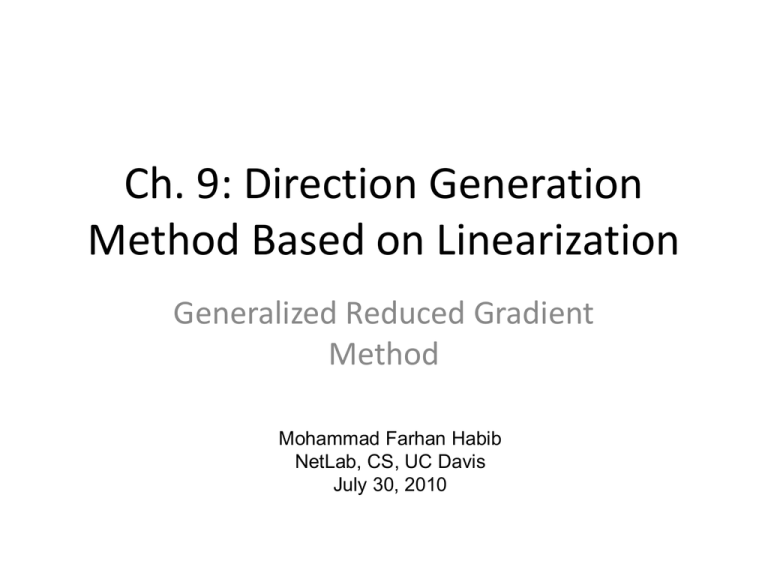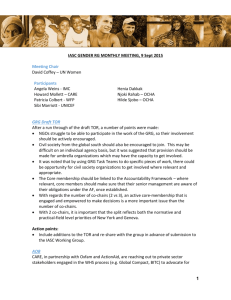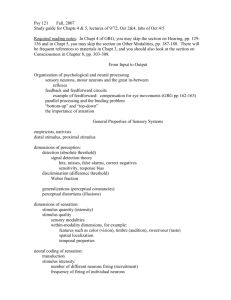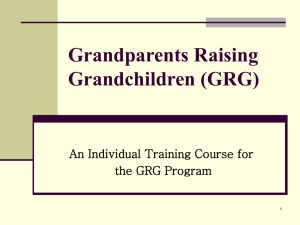Ch. 9: Direction Generation Method Based on Linearization
advertisement

Ch. 9: Direction Generation Method Based on Linearization Generalized Reduced Gradient Method Mohammad Farhan Habib NetLab, CS, UC Davis July 30, 2010 Objective • Methods to solve general NLP problems – Equality constraints – Inequality Constraints Implicit Variable Elimination • Eliminate variables by solving equality constraints • Explicit elimination is not always possible – Reduce the problem dimension Implicit Variable Elimination • X(1) satisfies the constraints of the equality constrained problem • Linear approximation to the problem constraints at X(1) • This system of equations have more unknowns than equation – Solve for k variables in terms of other N-K Implicit Variable Elimination • First K variables - (basic) • Remaining N-K variables – (non-basic) • Partition the row vector into and • Equation 9.14 becomes, Implicit Variable Elimination • appears to be an unconstrained function involving only the N-K non-basic variables Implicit Variable Elimination • The first order necessary condition for X(1) to be a local minima of is, - reduced gradient Basic Generalized Reduced Gradient (GRG) algorithm • Suppose at iteration t, feasible point available and the partition are Basic GRG algorithm • d is a descent direction – From first order tailor expansion of equation 9.16, – is implicit in the above construction Basic GRG algorithm – Example 1 • Linear approximation – • Most of the points do not satisfy the equality constraints – d is a descent direction – d in general leads to infeasible points Basic GRG algorithm • More precisely, is a descent direction in the space of non-basic variables but the composite direction vector yields infeasible points Basic GRG algorithm – Example 2 Basic GRG algorithm – Example 2 • For every values of α that is selected as a trial, the constraint equation will have to be solved for the values of the dependent variables that will cause the resulting point to be feasible • Newton’s iteration formula to solve the set of equations, is • In this problem, GRG Algorithm GRG Algorithm – Example 3 GRG Algorithm - Example GRG Algorithm - Example GRG Algorithm - Example Extension of GRG – Inequality Constraints and Bounds on Variables • Upper and lower variable bounds – A check must be made to ensure that only variables that are not on or very near their bounds are labeled as basic variables – The direction vector d is modified to ensure that the bounds on the independent variables will not be violated if movement is undertaken in the d direction. This is accomplished by setting – Checks must be inserted in step 3 of the basic GRG algorithm to ensure that the bounds are not exceeded either during the search on or during the Newton iterations. Extension of GRG – Inequality Constraints and Bounds on Variables • Inequality constraints – explicitly writing these constraints as equalities using slack variables – implicitly using the concept of active constraint set as in feasible direction methods. Extension of GRG - Example Extension of GRG - Example Extension of GRG - Example Extension of GRG - Example Extension of GRG - Example Extension of GRG - Example Summary • Linearization of the nonlinear problem functions to generate good search directions • Two types of algorithms – Feasible direction methods • Required the solution of an LP sub-problem – GRG algorithm • solve a set of linear equations to determine a good descent direction











